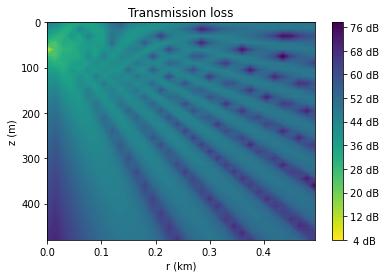The ocean is filled with sound from environmental and biological sources and, to an increasing degree, anthropogenic sources. In the absence of biological and anthropogenic sounds, waves, currents, and rain are some of the main sources of noise in the ocean. Therefore, for a wide range of under acoustics applications, it is of considerable interest to be able to accurately predict the ambient noise level due to these three ocean-climate variables. For example, accurate knowledge of the ambient noise levels may permit estimates of the effective detection range of acoustic tracking arrays and the communication ranges of marine species, to name just a couple of examples.
Computational methods for modelling underwater sound propagation are well established and several open-source codes are available. However, the problem of modelling ambient noise levels remains a daunting task, primarily due to the complexity of obtaining the relevant environmental data to inform the model. This includes bathymetry, temperature and salinity (to determine the sound speed profile), seafloor lithology, and of course data on the noise sources, i.e., waves, currents, and rain. The challenges include identifying reliable data sources, automating the data retrieval, and typically some level of post-processing and interpolation to permit the data to be combined on the same computational grid.
To address this challenge, MERIDIAN has teamed up with Dr. David Barclay, oceaographer and underwater acoustician at Dalhousie University, to develop a new software library for the purpose of streamlining and automating the data pipeline for ocean ambient noise modelling. Named Kadlu, the library was released in March 2020 under the open-source GPL v3 license.
MERIDIAN is also creating a web application called the Atlas du paysage sonore sous-marin to visualize the distribution of noise in the oceans, which you can read more about here.
For more information, explore the individual products and services listed in the menu to the right.
